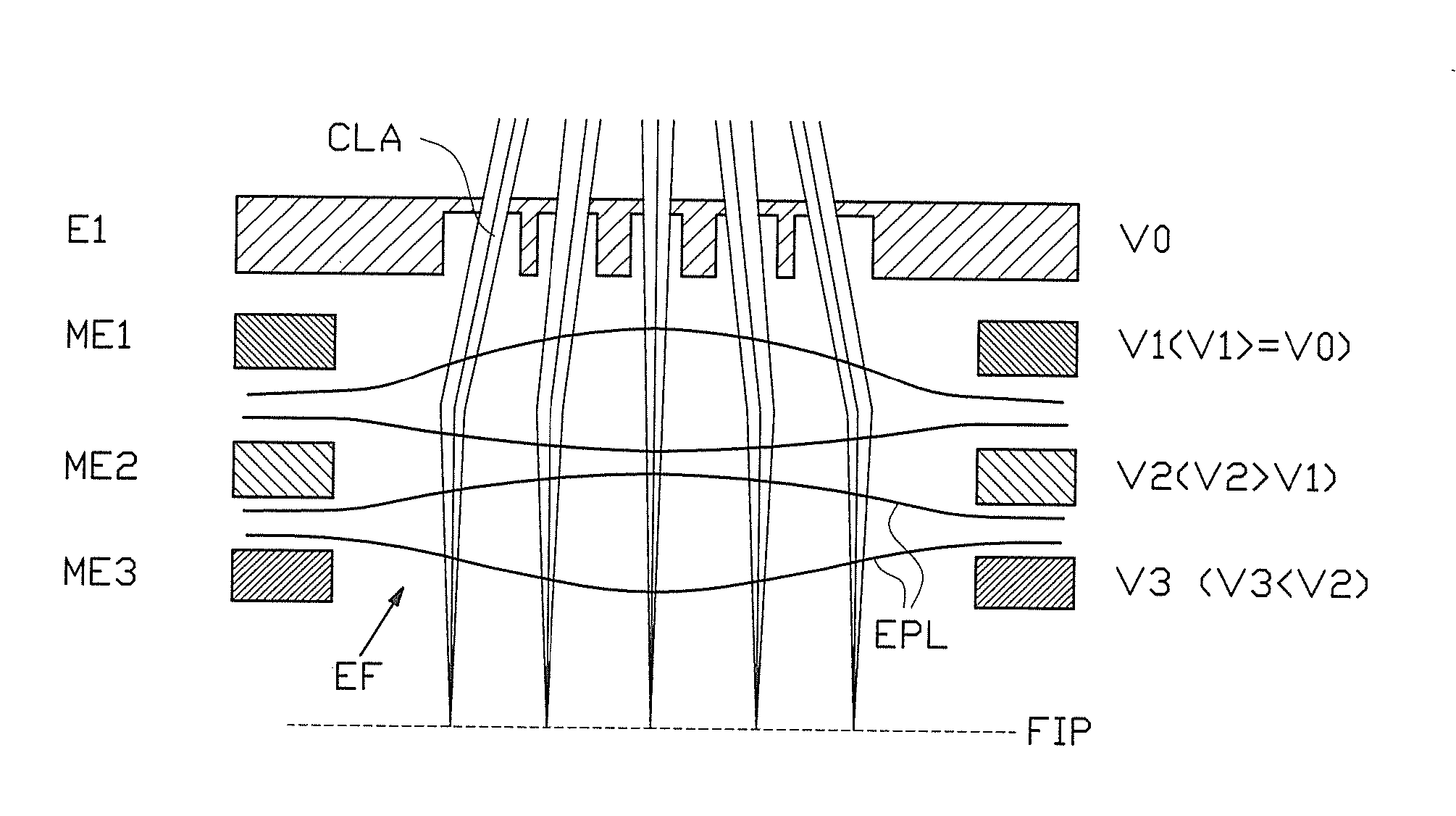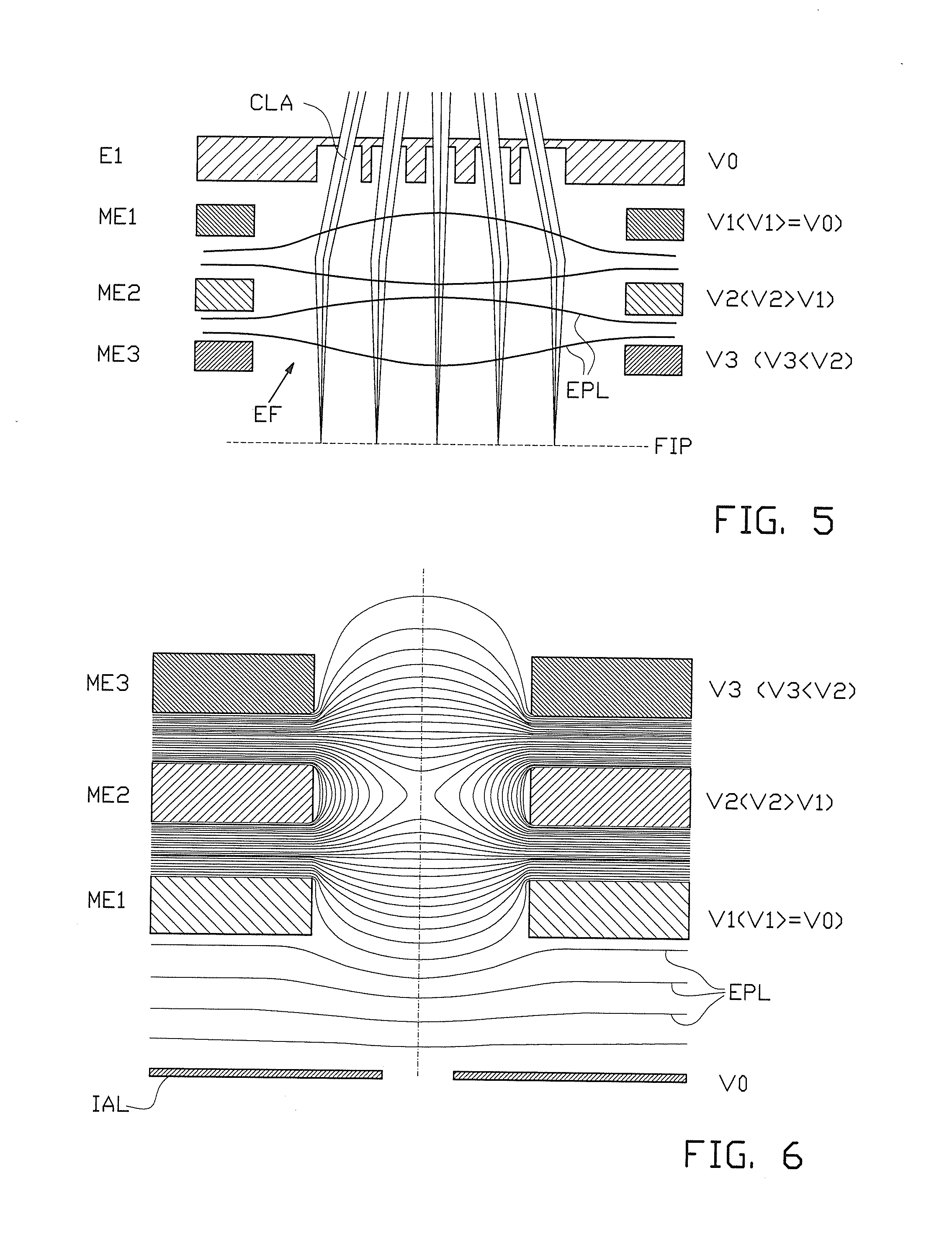Multiple beam charged particle optical system
a particle and optical system technology, applied in the field of microlens arrays, can solve the problems of low throughput, coulomb blur in conventional single beam systems, and limited system throughput, and achieve the effect of small aperture lens strength and field curvature correction
- Summary
- Abstract
- Description
- Claims
- Application Information
AI Technical Summary
Benefits of technology
Problems solved by technology
Method used
Image
Examples
Embodiment Construction
[0042]FIG. 1 shows an alignment of a current limiting aperture CLA, normally part of an array of such apertures CLA and included in an aperture plate AP, and a lens 2. The current limiting aperture CLA of the lens is in such a position, that for a beam 3, such as a charged particle beam, with a certain incident angle α, the virtual aperture VA is located in a centre part of the lens 2, and symmetrical along the optical axis OA of the lens. Here, the middle, i.e. centre of the lens means the geometry centre of the lens. In case of a two electrode lens, the middle of the lens is at the middle of two electrodes and the in case of three electrode lens, the middle of the lens is at the middle of the central electrode, and in case of an aperture lens, the middle of the lens is at the end plane of the aperture. The image further shows an image plane IP.
[0043] In FIG. 2 and FIG. 3, two examples of two-electrode lens arrays are presented in the form of lens structures 5, 6, in short also de...
PUM
 Login to View More
Login to View More Abstract
Description
Claims
Application Information
 Login to View More
Login to View More - R&D
- Intellectual Property
- Life Sciences
- Materials
- Tech Scout
- Unparalleled Data Quality
- Higher Quality Content
- 60% Fewer Hallucinations
Browse by: Latest US Patents, China's latest patents, Technical Efficacy Thesaurus, Application Domain, Technology Topic, Popular Technical Reports.
© 2025 PatSnap. All rights reserved.Legal|Privacy policy|Modern Slavery Act Transparency Statement|Sitemap|About US| Contact US: help@patsnap.com



